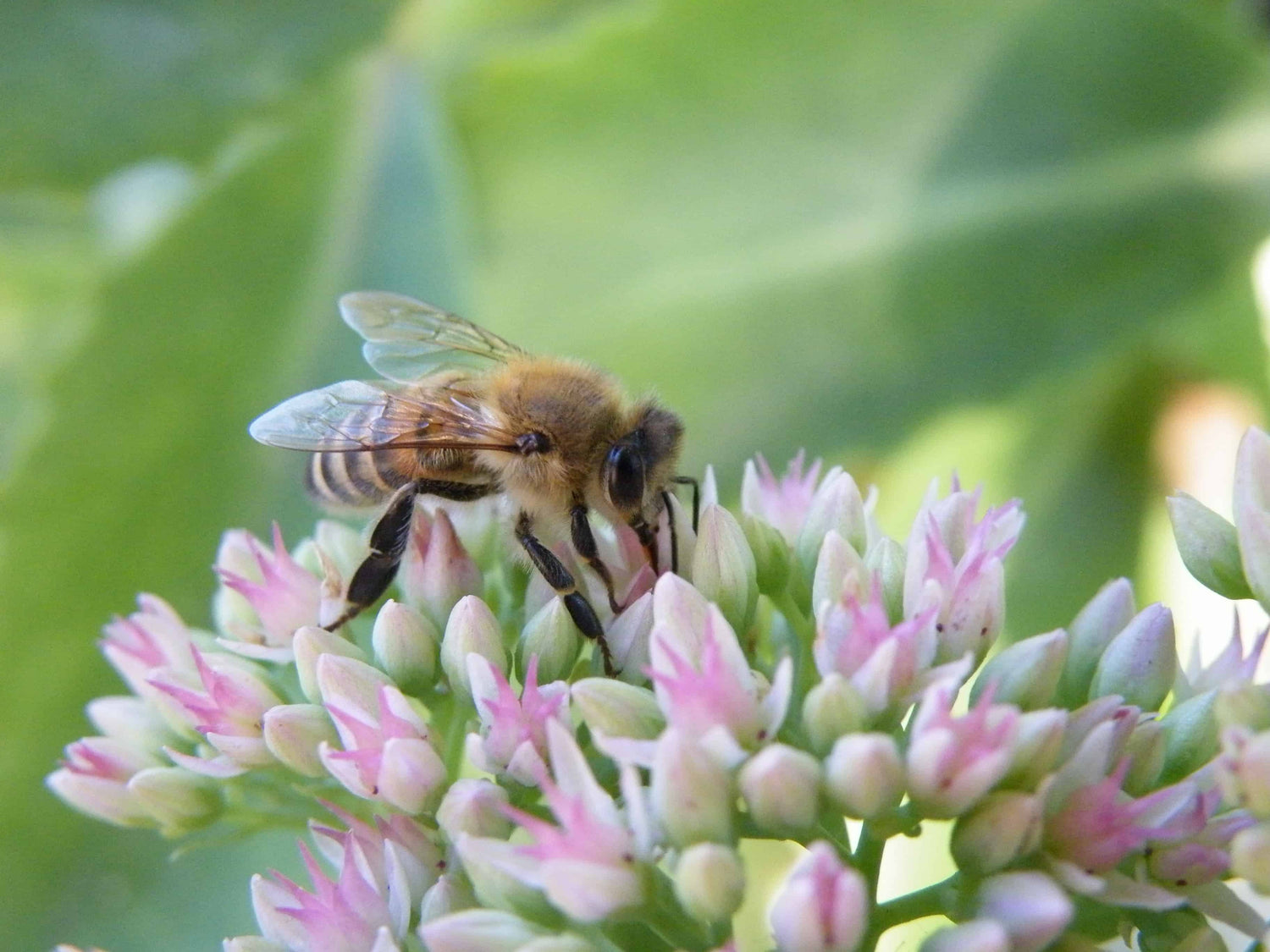Climate Change and Bee Conservation
Honeybees are arguably our most important commercially available pollinator. Our diets are more exciting and nutritious because of these incredible little beings. Honeybees are responsible for pollinating a variety of food plants, from fruits, vegetables and nuts, making them essential for our livelihoods.
Typically, some bees will die off from season to season; beekeepers tend to expect a 17% annual decrease. However, recent years have shown losses to have doubled, causing major concerns.
I discuss honeybees with a wide range of people, including beekeepers, growers, and members of the general public. Most of my audience members are worried about how honeybee losses may impact the security of our food supply. The dramatic and unexpected colony collapses ten years ago have subsided, but the alarming rates of honeybee mortality remain. To safeguard bees, we need to understand the various stressors that affect them and begin to develop solutions to protect them.

Pesticide Impacts
Questions about how pesticides affect honeybee health have spurred passionate debate. One key issue is whether neonicotinoids, a class of insecticides that affect insects’ nervous systems, are causing widespread bee deaths. There are many gaps in our knowledge about neonicotinoids and other types of pesticides. We have little understanding of the impacts of pesticide combinations and how they affect developing bees. Studies show that when bees have access to optimal nutrition, they are better able to deal with diseases and pesticides. However, intensive farming and urbanisation have reduced the amount of readily available forage that bees need to thrive. Analysing what types of flowering plants provide the best supplemental forage for bees. Growers can support bees by planting these species near their crops.
Climate Change
As global temperatures continue to rise, ecosystems around the world are affected as habitats become unliveable for plants and animals. This change in temperature impacts plant growth as seasons become irregular and no longer provide the perfect conditions for growth. Plants, insects, and animals have a symbiotic relationship, so the inability of plants to grow in a particular season will have a negative ripple effect on the insects that pollinate them and the animals that feed off them.
Currently, more than a third of insect species are endangered, including the honeybee. If species continue to become extinct, this will have devastating consequences for our food system and will lead to food and water shortages.
Impacts of Honeybee Losses
In 2006, beekeepers in the United Kingdom reported that a mysterious affliction, dubbed Colony Collapse disorder (CCD), was causing widespread die-offs of bees. In colonies affected by CCD, adult workers completely disappeared, although plentiful brood (developing bees) and the queen remained. Beekeepers found no adult bees in and around the hives and noted that pests and bees from neighbouring hives did not immediately raid the affected hives, as might be expected.
Scientists now agree that CCD was likely caused by a combination of environmental and biological factors, but nothing specific has been confirmed or proven. CCD is causing large-scale colony death in the world.
Beekeepers’ biggest challenge today is probably varroa, an aptly named parasitic mite that we call the vampire of the bee world. Varroa feeds on haemolymph (the insect “blood”) of adult and developing honeybees. In the process, it transmits pathogens and suppresses bees’ immune response. They are fairly large relative to bees: for perspective, imagine a parasite the size of a dinner plate feeding on you. Individual bees often are hosts to multiple mites.
Honeybees also are exposed to viruses, bacteria and fungi. For example, the deformed wing virus (DWV) causes wing deformities that prevent bees from performing normal work functions such as foraging for food. Viruses have been implicated as an important factor in honeybee health declines, but we are just starting to understand how Honeybees’ immune systems fight against them We may be able to help strengthen bees’ immune responses by making diverse foraging resources, such as a variety of wildflowers, easily accessible.

How Can You Help
Many people who are not beekeepers or growers want to know how they can help. Here are some things you can do as an individual or as a business to help mitigate species loss:
- Forage plants, especially varieties that bloom at different times during the year.
- Buy sustainable, organic vegetables and produce, and reduce or eliminate meat and dairy consumption
- Use your power and influence in the business world to lobby governments into taking definitive action on climate change
- Work with our business to get a hive in your workplace and help transform the surrounding area of your office into a thriving green space that helps encourage biodiversity
Bee Apart of the Change Today
